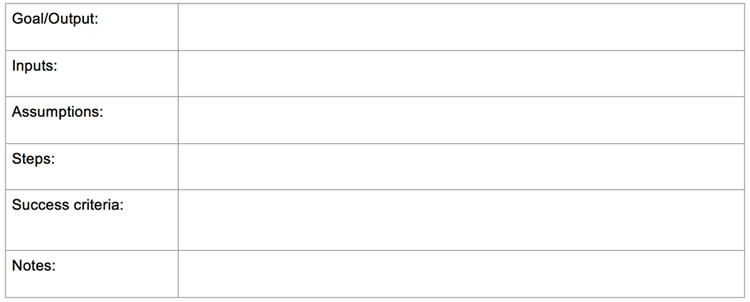
Usability is the glue that sticks your user to your web and mobile designs. Well executed user interface (UI) design does not mean much if your users do not know how to engage with it. It needs to be usable, useful and credible as well as desirable. If the UX-factor is not enough of an incentive, think of it this way: optimising your usability pays off. A usable web or mobile application can boost conversion rates, lower support costs and reduce design and development rework.
Luckily, it is possible to optimise your usability. By performing a usability test, you can assess how easily your users can connect with your UI. These studies help you adjust your design strategy to benefit the user and encourage them to return to your website and convert.
So it is time to think beyond the edge of the screen. When performing your usability test, your research goals should be the driving force behind each question you ask. What metrics should I test? Should I go for quantitative or qualitative research? How many participants do I need?
The answers will depend on your web or mobile end product. But do not worry, this article will walk you through all the usability basics and show you how to define effective usability test goals.
What is a Usability Test?
A usability test is how UX researchers evaluate how easy or difficult a task is to complete. In web design, usability research involves evaluating the way a user interacts with the UI, by observing and listening to users complete typical tasks such as completing a purchase or subscribing to a newsletter.
Studies are performed early on during the design process so that errors can be corrected as soon as possible and do not affect the fabric of the final product. In the worst case scenario, you will have plenty of time to start over and improve the overall user experience.
Usability tests can be split into two categories:
- Qualitative tests, or ‘qual’ research: These involve direct observation and assessment of how test participants engage with specific UI elements to determine which components are problematic.
- Quantitative tests, or ‘quant’ research: These consist of an indirect assessment of the UI design, either based on participants’ performance of tasks or their perception of usability (e.g. a survey or poll).
For a usability test, it is recommended that both quantitative and qualitative data is gathered.
Once the usability test is complete, the UX team will go back to the drawing board, or indeed wireframe or prototype, and correct the usability errors based on the participants’ behaviour and interactions.
Setting up a Reliable Usability Test with the Right Goals
So you are going for it. But before you get started, you will need a robust framework and some goals. You will want to define the following:
- Scope: What are you testing?
- Purpose: Why are you testing?
- Schedule and location: How long will the test take and where will you perform it? Will it require a laboratory or will participants be tested remotely? How often will you test? Do you intend to test in multiple locations? Will there be rental costs?
- Sessions: What is your sample size?
- Equipment: What kind of technology, materials, and resources will you require?
- Participants: Who are your target users? How will you source them? Will you be compensating participants for their time or travel? What role will they play?
- Scenarios: Who is the user? Why are they here? What goals do they have?
- Metrics: For each scenario, you will want to define the metrics you will measure their activity against
We know what you are thinking – how will you know the answers to these questions? It is time to define your goals.
Engage Stakeholders to Set Usability Goals
Sometimes it is obvious what you need to test. If you are redesigning a navigation flow, you will want to see how the user gets from Point A to B; if you are testing the user journey of signing up, you will want to take a look at how they interact with your sign up input form, and so on and so forth.
But often, particularly for new user researchers, it can be tricky to get your head around a usability test and what your goals are. UserTesting has a great analogy on this.
The first step to setting your usability test goals is to talk to your stakeholders. At project kick-off, hold a preliminary meeting with stakeholders to gauge what they know about the product. This will help you determine what high-level features you will build out.
Then, by drilling down into the details around each feature and process, you will be able to identify what to have reviewed in the usability test. If it is a redesign, take a look at past analytics to pinpoint where you have gone wrong and what impact it has had, e.g. high bounce or exit rate.
Tip: A common pain point for UX teams is having too many goals laid out by stakeholders. Prioritising goals with stakeholders early on will help you avoid having too many test variables.
Categorising your Usability Goals
Once you have identified your goals, you can start to categorise them and break them down into different groups. Sort these groups by importance to users and your stakeholders. Mutual Mobile’s Becky White offers up a helpful sample exercise to help you reduce the scope of your goals:
Gather your team together, get your hands on some sticky notes and have each team member write down some questions related to your target users. Then, group the questions and arrange them according to the themes that emerge.
Each group should have a problem statement/scenario with a list of research goals. For each research goal, list the relevant participant activities and behaviours. For each group of goals, write questions about what you want to ask the participants about the task they are performing. Like this:
- Feature/Process
- Goals/groups of goals
- Problem statement/scenario
- Questions to participants
UserZoom has an excellent template for outlining your problem statements or scenarios.
Template:

Example:

Once you have defined your goals, you can plan your testing framework and answer those questions from before.
What Metrics Should you use to Measure Usability?
Now you know what you are going to do in your usability test. But what about what you want to get out of it? As Jakob Nielsen puts it: “collecting buckets of user data will do no good if the resulting recommendations are not followed.”
This is the part of the usability test where lots of people get confused. There are tons of metrics to measure usability against, and it is not always clear which ones you should include. But do not be alarmed. Metrics are useful because there is no magic ‘thermometer’ to tell you if your users are going to interact with your web or mobile product.
Usability metrics are standards of measurement to show you whether your UX strategy is working. They help you track changes over time, assess competitive position, benchmark against design interactions and product releases and set future goals to make your UI work better. The metrics that we use to measure usability include:
- Successful task completion: The most straightforward and most crucial usability measuring stick that measures the percentage of tasks that test participants complete correctly
- Critical errors: Errors that block the user from completing a task successfully, e.g. due to participant workflow deviation
- Non-critical errors: Errors that are recovered by the participant and does not affect their ability to successfully complete a task
- Error-free rate: Percentage of participants who complete a task successfully without any errors
- Time on task: The amount of time it takes participants to complete a task successfully
- Task level satisfaction: To flag a difficult task
- Test level satisfaction: To evaluate how the participant felt about the overall experience
With feedback on user behaviour and data collected from your metrics, you will be better informed about the usability of your web or mobile product. Apply what you have learned and start to build out those UX-boosting improvements.
Why Usability Tests Matter
You cannot fix something if you do not know it is broken. As Susan Farrell has it: “User research reduces the likelihood of building something that doesn’t meet user needs, but only when everyone knows what those are.”
Good usability makes it so users do not want to leave your website and app. But without a usability test, you cannot evaluate user performance or determine if they can complete tasks efficiently, how long it takes them, and if they were satisfied with the experience.
Usability research helps you anticipate engagement roadblocks, and correct navigation and accessibility oversights which can curb learnability, efficiency and memorability. By evaluating actual user behaviour patterns, not only can you identify and correct usability and accessibility errors, but you learn more about your users, their expectations and goals. This will help you improve the overall user satisfaction and the user’s experience of your product.
Usability Testing Best Practices
- Do usability testing early on. It is easy to incorporate it early in the design process and will have the most significant impact the earlier applied.
- Perform QA testing before usability testing. Participants are not there to spell check or be slowed down by bugs and crashes.
- Consider doing your usability test with a prototyping tool, such as Justinmind. As the guys over at UXbert Labs have it, testing is most effective when done on a prototype because you can implement any changes before you have started development or your final visual design.
- You do not need loads of participants per test cycle. According to the Nielsen Norman Group, 5 participants could be enough.
- Test with real users and, actual data for the most accurate results – early adopters are ideal because they are tech-savvy and will streamline the testing process. Then, access the best usability testing tools and assess your design with real users!
The Takeaway
Usability tests are the best way to ensure the usefulness of your web or mobile UI, with the bonus of sizing up the market. Any form of usability research should be performed early on in the design process to avoid rework and wasted resources.
A successful usability test enables you to improve your product with real-world feedback. The key to a successful usability test is in the planning. You need to involve your stakeholders as well as your team in defining the goals of your test, and how to measure them. Knowing exactly what you want to take away from your testing will make the process more streamlined and the results more meaningful.
Want to learn more?
If you’d like to…
- learn all the details of Usability Testing
- get easy-to-use templates
- learn how to properly quantify the usability of a system/service/product/app/etc
- learn how to communicate the result to your management
… then consider to take the online course Conducting Usability Testing.
If, on the other hand, you want to brush up on the basics of UX and Usability, then consider to take the online course on User Experience. Good luck on your learning journey!
(Lead image: A quote by Antoine de Saint-Exupéry. Image retrieved from Depositphotos – affiliate link)
